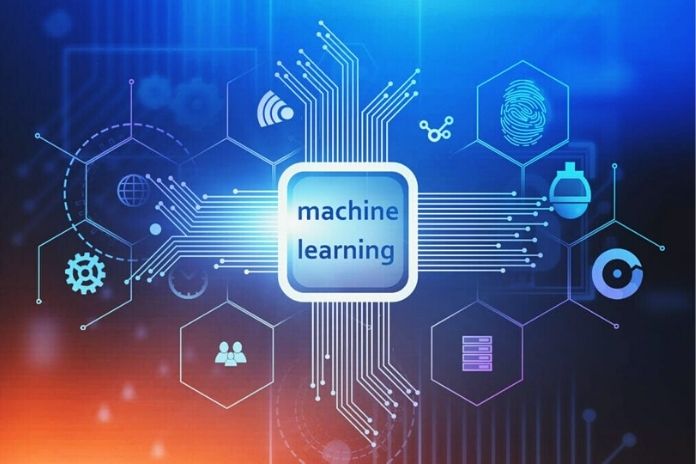ML is a part of computerized reasoning whose objective is to make machines that learn or develop execution based on their information. It is an instrument like that utilized by the human psyche. Although We aren’t an ML master, We are as yet intrigued by the potential outcomes that this innovation offers today, so we chose to focus and begin getting what is behind a point all the rage. At the premise of ML, We tracked down a basic idea: the way of behaving of the calculations is not generally modified, not set in stone by the learning of information.
Before The ML
In the past, if you wanted to “train” a machine to recognize things or situations, you had to anticipate all possible scenarios. The so-called Rule-Based Systems were created, which are nothing more than a collection of if-then to list the many possibilities.
Today, With The ML
The idea is to use generic algorithms that can extract useful information from a cauldron of data without formalizing all aspects of the problem to be analyzed. An ML system tries to discover the patterns hidden in the data and exploits them for analysis on future inputs. This is not a precise technique, but several algorithms use different approaches to analyze the input and derive information about the system output. We did not immediately go into how the individual algorithms work, but I understood that the first distinction between them is based on the type of learning.
Supervised Learning
In a first phase, called training, pairs of values are supplied to the system as input: the data and a label (which coincides with the expected result). The system will have to find a rule that relates the two information so that, following the training and in the face of unknown inputs, the correct results can be obtained. This type of learning is typically used for classification problems.
Unsupervised Learning
In this case, we do not provide the system with initial data classification. Its task will be precisely to extract a rule that groups the input data according to characteristics it derives from the data itself. Due to its nature, it is widely used to solve clustering problems, in which we want to extract information not yet known from the data.
In the e-commerce field, it could be helpful to, for example, identify sales segments based on price per unit and quantity. We may find that there is a correlation between the products we have sold between these two values. We may also highlight similar user groups to set up marketing campaigns based on past purchases of the identified groups. There is a third type of classification, reinforcement learning, where the data passed as input to the system are processed, and feedback is provided to the system based on the expected result.
Therefore? What’s The Use Of This Stuff For Me?
Today, the ML is used to cover different functions present on an online store. Among the exciting ideas are sure to be taken into consideration:
Price Optimization
the optimal price is the result of a trade-off between:
- Company objectives
- Competitor prices
- Seasonality
- Local request
- Quantity of products sold
- Operating costs
Putting this burden on the ML and streamlining the workload allows you to get a more precise result.
Demand Forecast
Having an insufficient number of items of a specific product could mean that it will soon go out of stock. On the other hand, having more than necessary would imply unnecessary warehouse costs. Allowing AI to learn what (and when) users buy could effectively solve this problem.
Product Classification
Assigning the right category can be tiring for large catalogs. Mistakes can be costly since products that are not categorized correctly appear confusing and may not be found by customers looking in the correct categories. Many solutions that see the use of ML can automate this process by exploiting the texts relating to the product (such as title or description) or by using images.
Server Resource Management
In addition to business and application aspects, the ML can be useful for managing the infrastructure that hosts the store. For example, AWS provides predictive scaling, which, based on the historical data of the instance, can provide forecasts on the expected load in the following days or weeks, adequately scaling the resources, avoiding unnecessary costs, and significantly reducing the time in which the site may be unavailable.
Alert Systems
By monitoring the behavior of an environment over time, it is possible to establish the margins of normality within which it operates. Exceeding these thresholds could be used to generate alerts. We can think of an alerts system based on the sales flow (which takes into account seasonality, location, and other factors) to determine if at a particular moment there could be a malfunction or not. The trigger should be triggered if the sales flow does not reflect the predictions made by the AI.
Referral Systems
These are a bit like shop assistants. You ask for information about a product. They show you the product and several other items that might interest you as if you were an old customer, or they put you on the counter. The products on which they have the most profit margin.
Conclusion
In conclusion, returning to the heart of the matter, many technical explanations could be made on the subject. Still, it is necessary to be clear that data is a fundamental piece for this technology, you need to have a good amount of it, and above all, it is essential to know how to use them. Otherwise, it would not be easy to make the most of Machine Learning to achieve the goals of each store manager, that is, to bring the business related to e-commerce to an increasingly exciting level.
Also Read: How To Use Wix To Build Our Website

